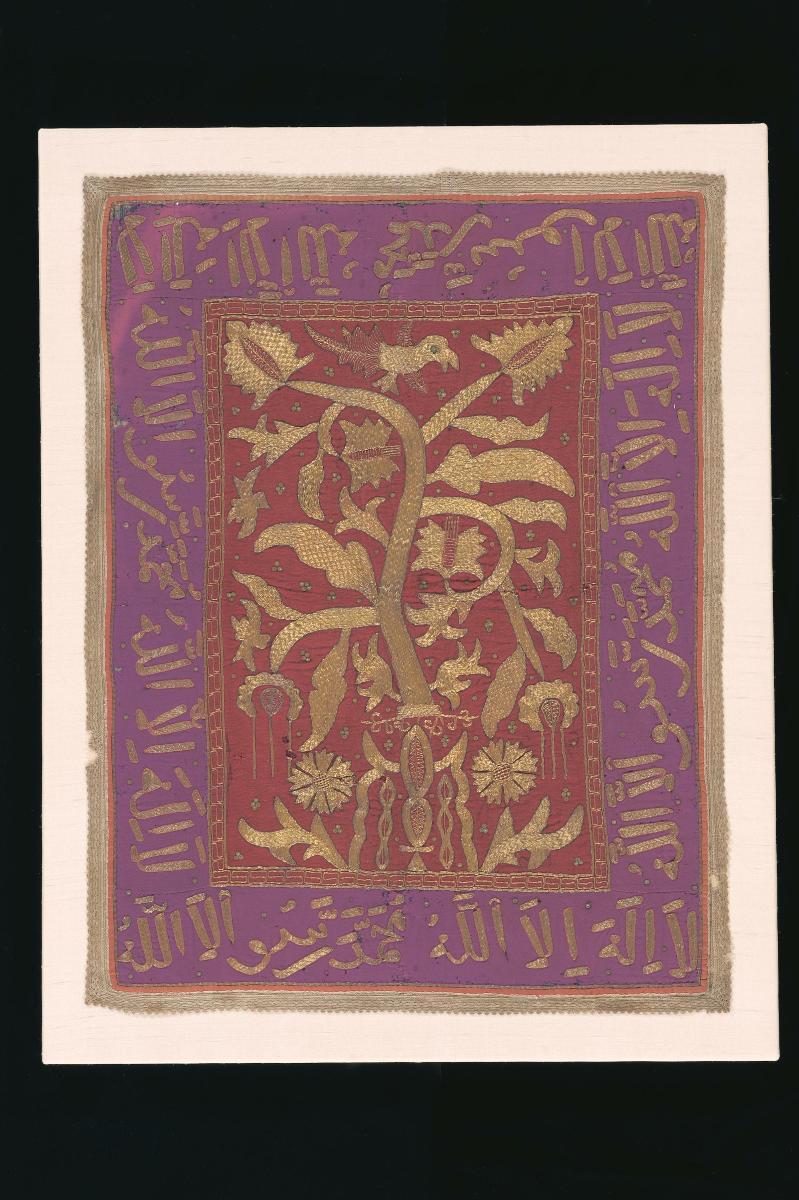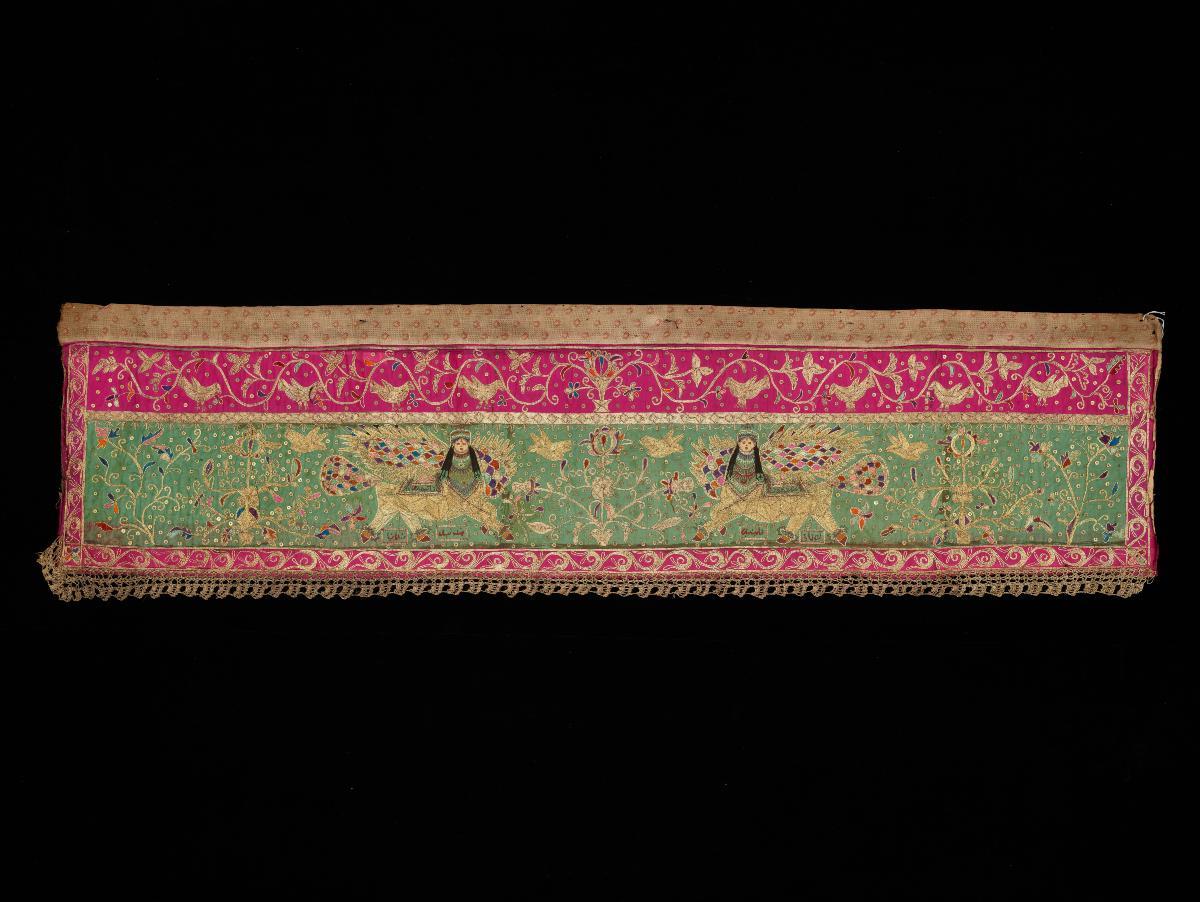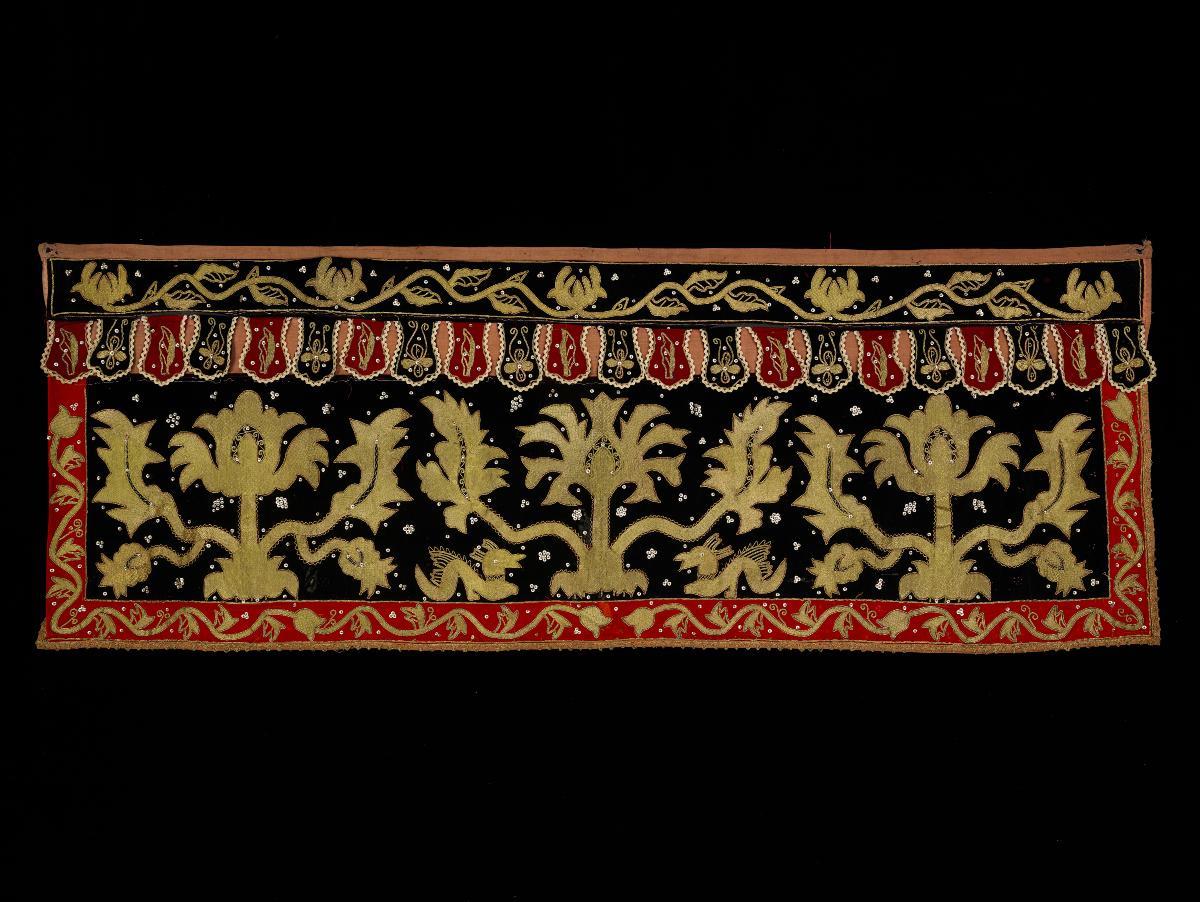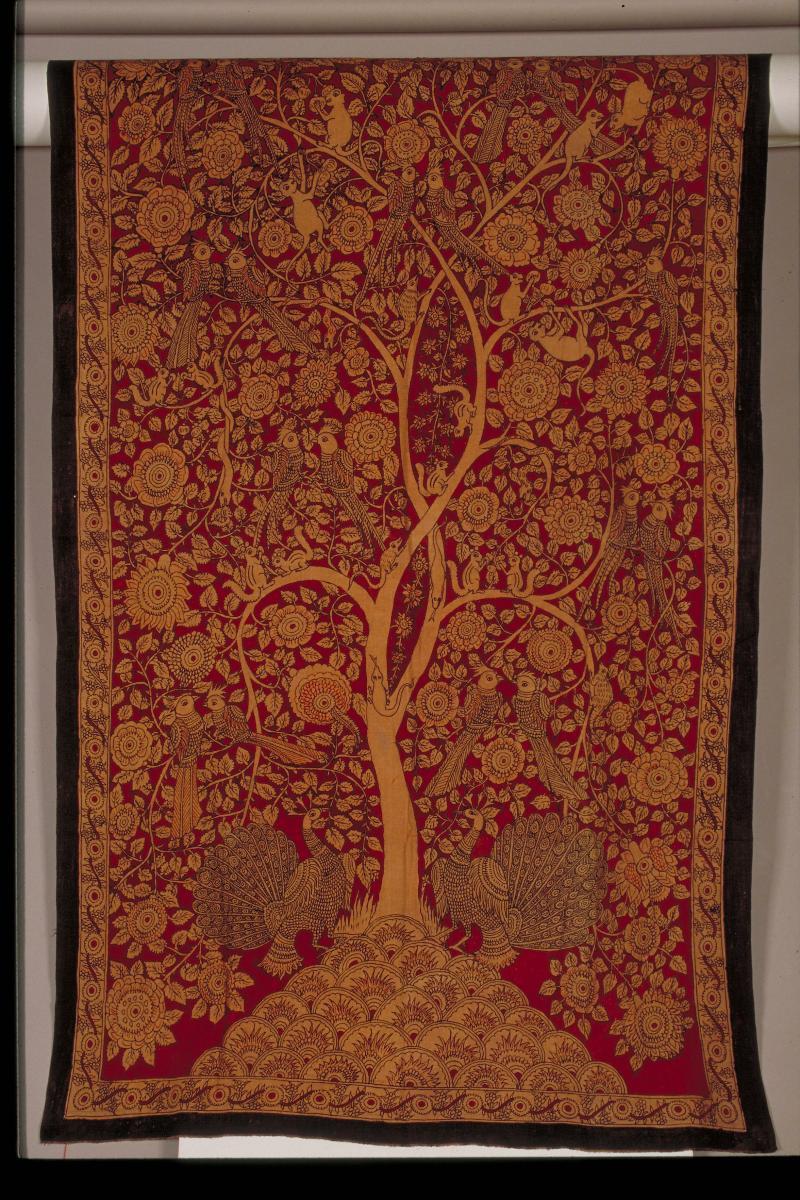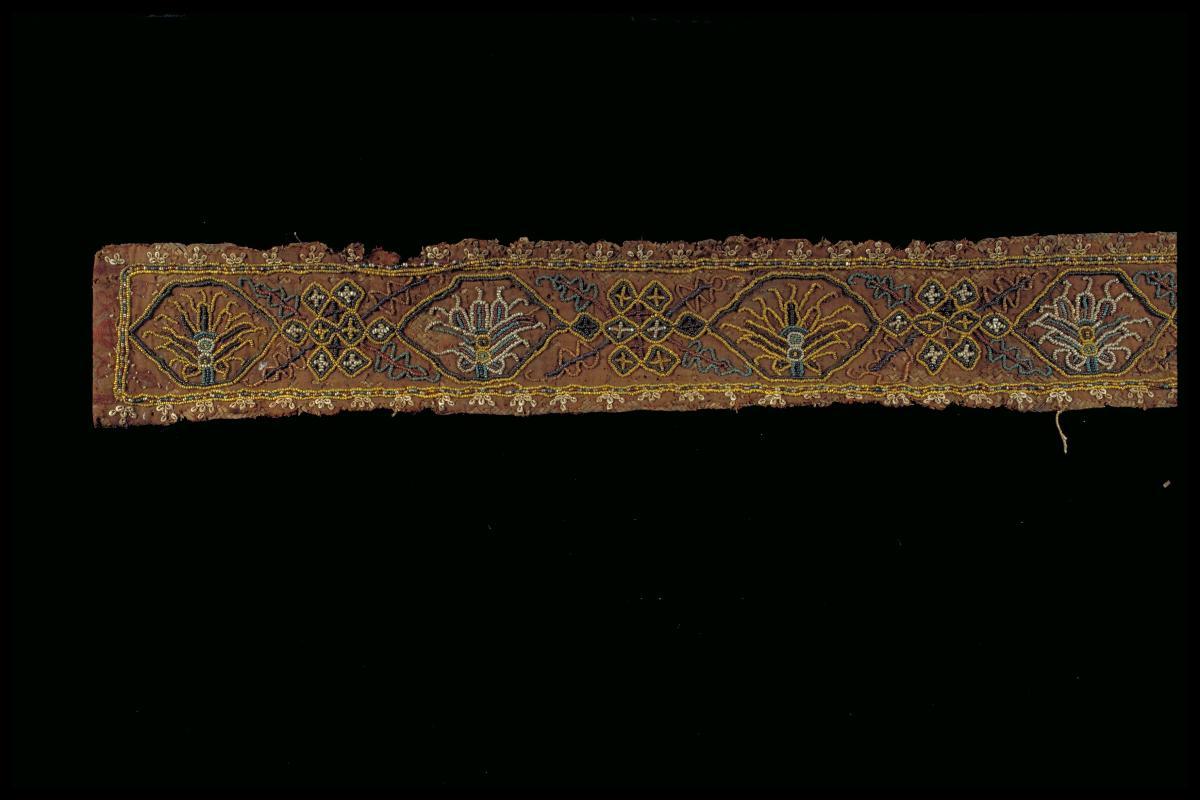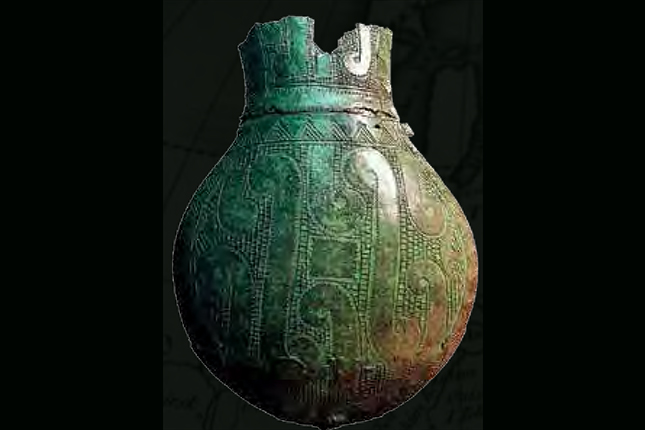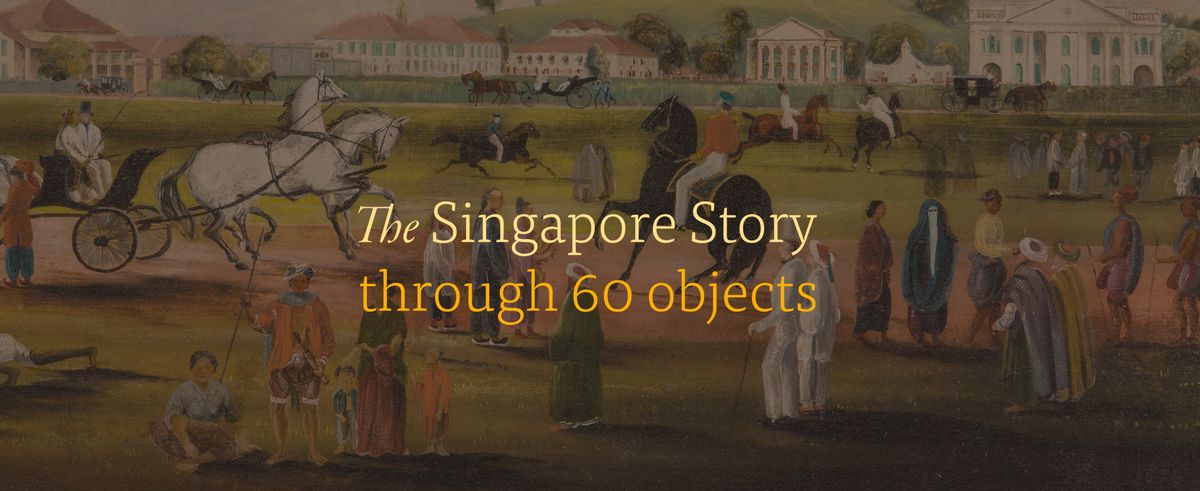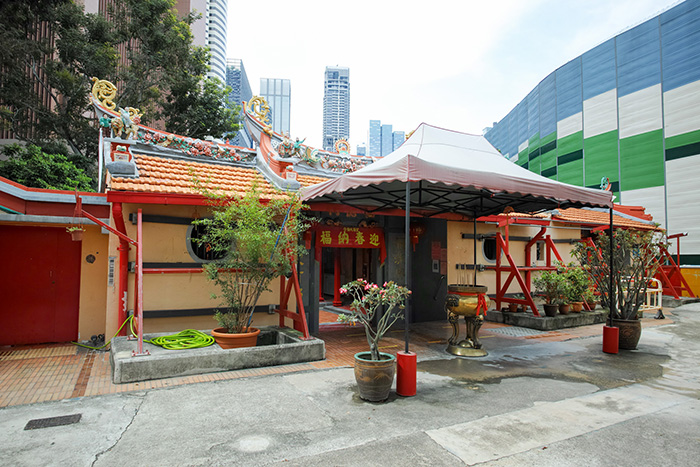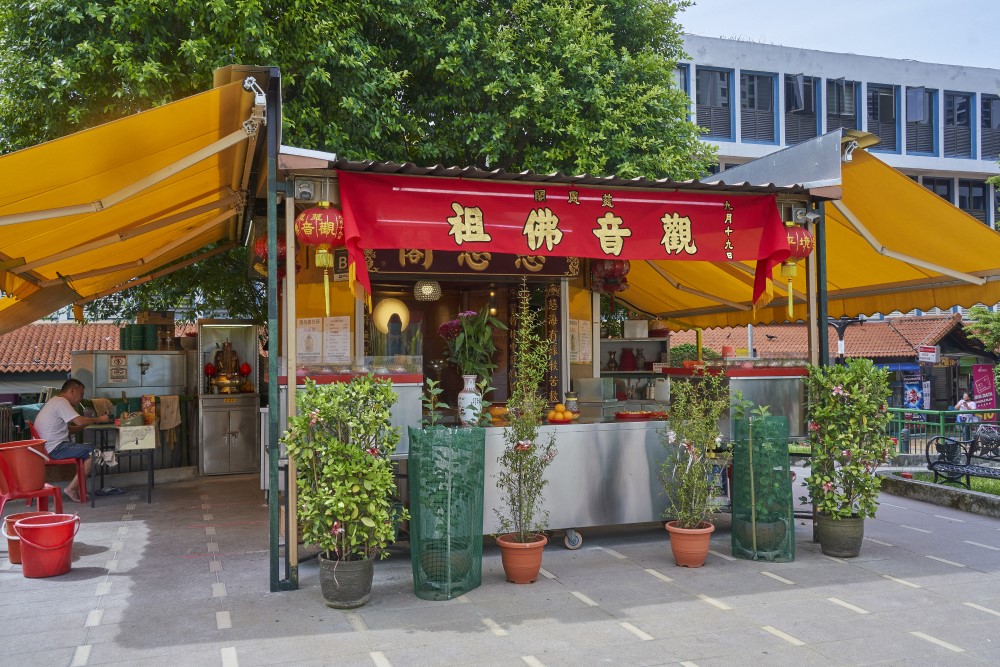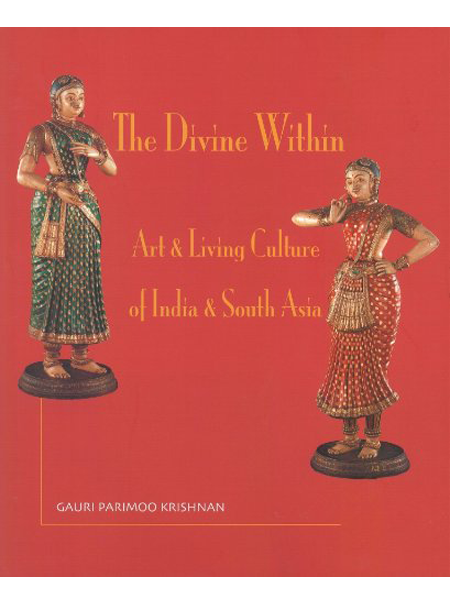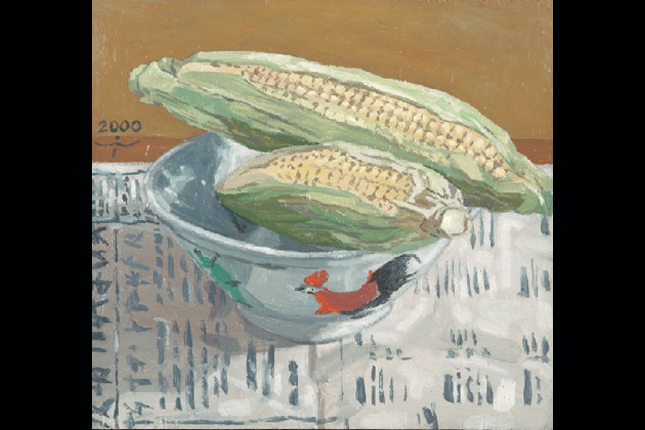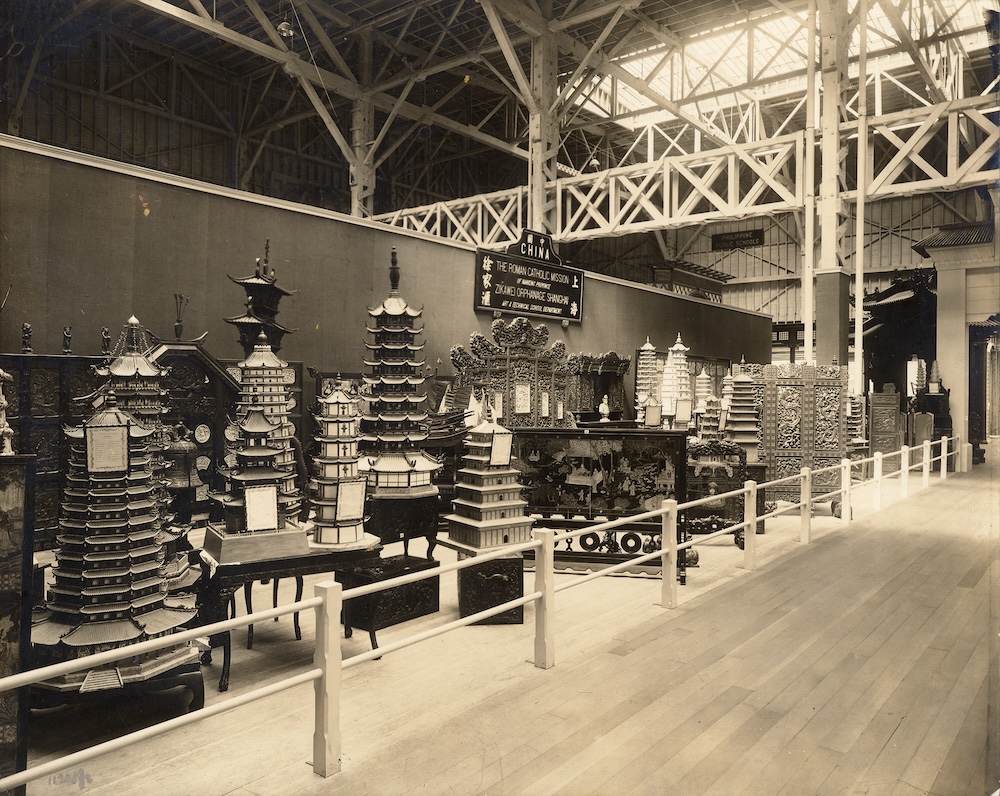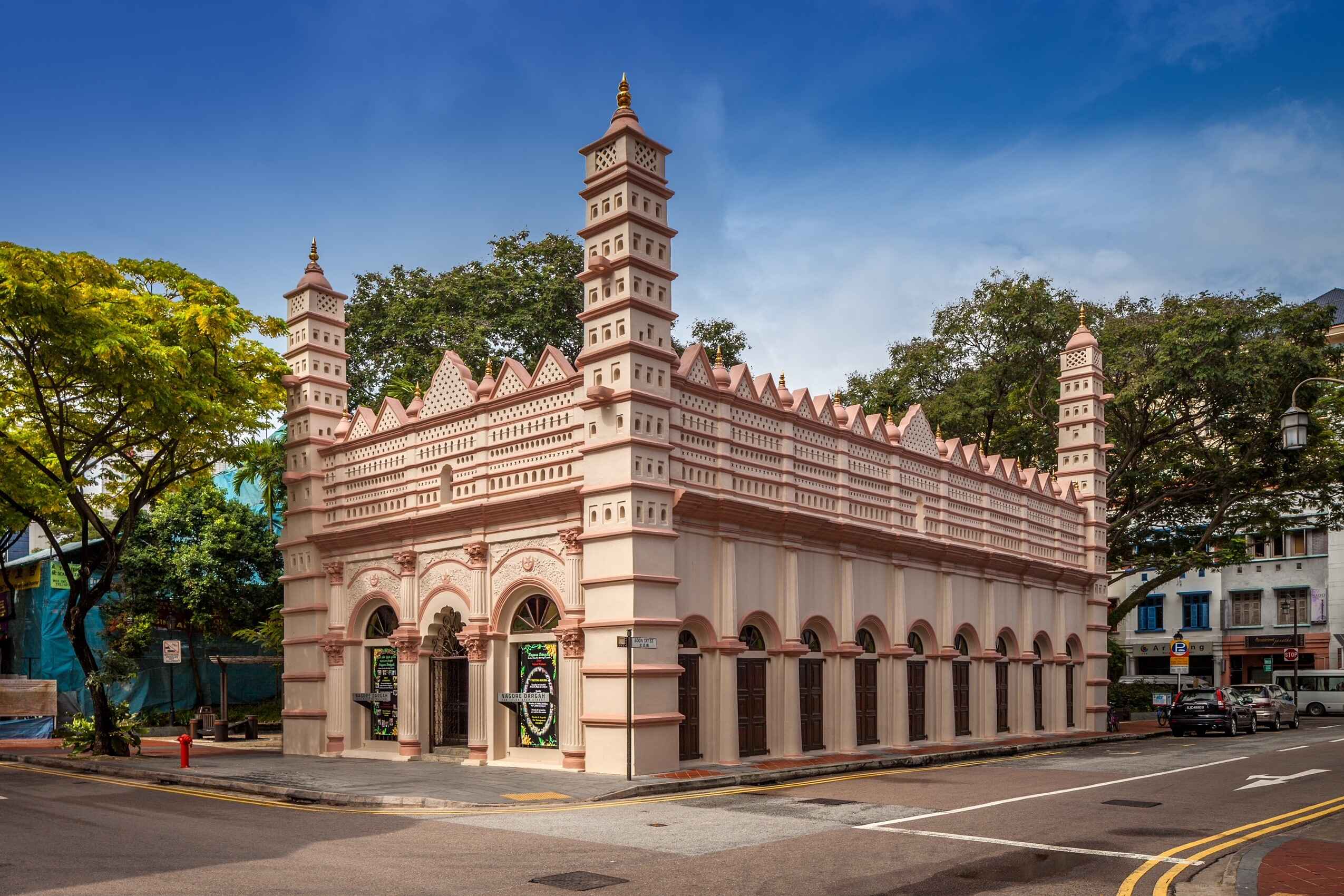The Tree of Life motif has roots in Central Asian iconography. In Southeast Asia, the motif resonates in both Islamic as well as pre-Islamic concepts such as the 'pohon budi' and the 'pauh janggi', a Malay mythical tree believed to anchor the earth in the heavens. Hangings such as this were used as decorations in important social ceremonies, most likely weddings or other important life events. The design of this piece is strikingly similar to relatively common Indian trade textiles dating to the 18th century. So much so that it is very likely the piece was modelled after them, probably to replace the Indian pieces which were, by then, rapidly ageing.




